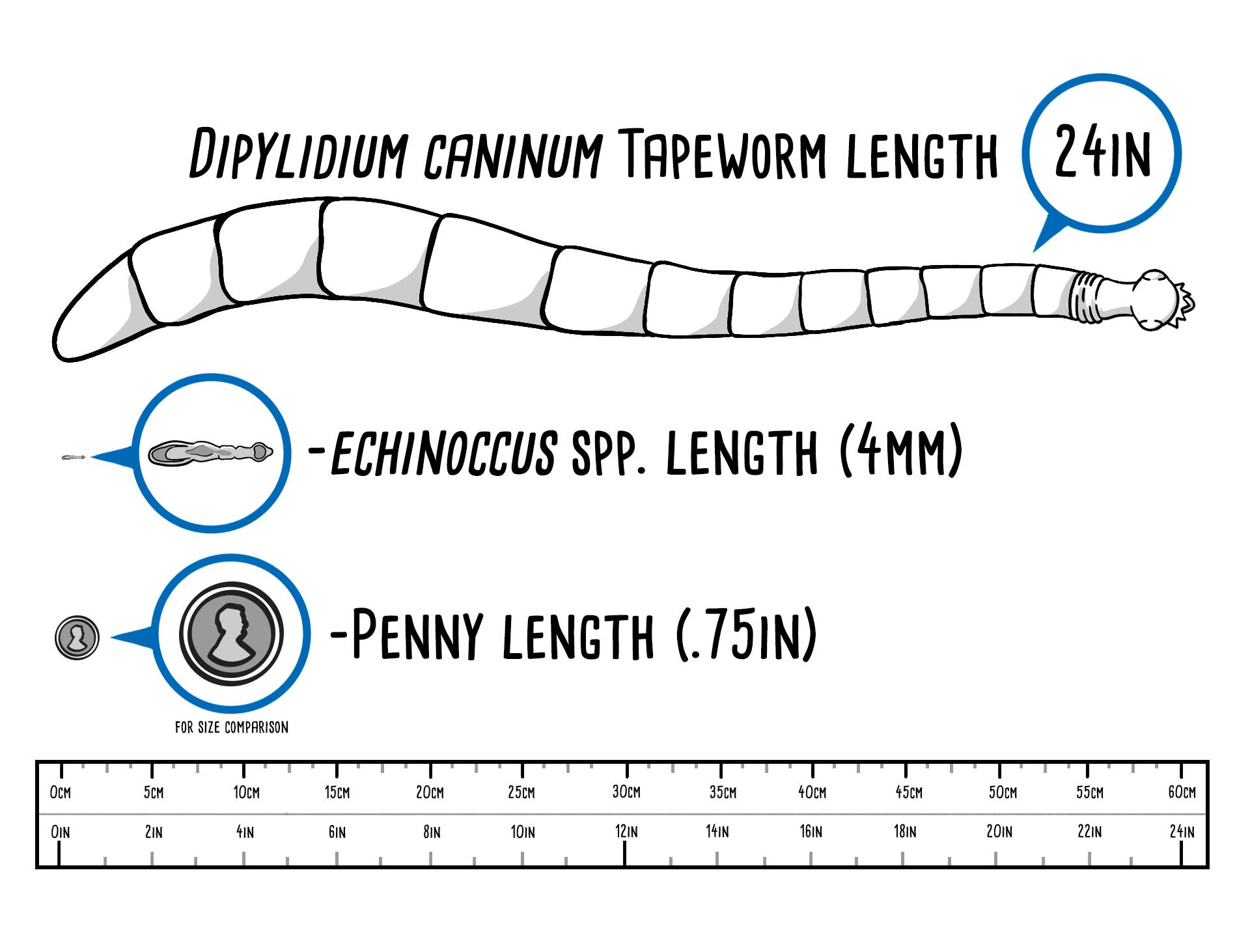Invisible Threats, Real Risks
Invisible Threats, Real Risks
Give your patients the parasite protection they might be missing
Protect Against Threats – Known and Unknown: The ugly truth about parasites
There’s no denying that parasites are everywhere. Whether it’s ticks and fleas or intestinal worms, these unwelcome intruders put your patients at serious risk of illness. Proactive protection can help keep the pets who visit your clinic healthy from existing parasites and emerging threats.
Stop ticks in their tracks
When it comes to ticks, speed of kill matters. Ticks transmit pathogens to their hosts during the feeding process, with longer feeding periods allowing more pathogens to be passed.3,4
Faster kill means:
- Less risk of pathogen transmission
- Greater pet owner satisfaction
A new head-to-head study found that lotilaner kills ticks* 2x as fast, reaches peak absorption in only 2 hours, and maintains high, sustained blood levels for the entire month.3,4
Lotilaner has a rapid and consistent speed of tick* kill that may contribute to reduced risk of tick*-borne pathogen transmission and increase pet owner product satisfaction.
*Amblyomma americanum (lone star tick)
**P≤0.05
Common Parasites
What Are the Latest Parasitic Threats – And Who’s at Risk?
Zoonotic diseases, or zoonoses, are illnesses that spread from animals to humans through contact with pets, livestock, contaminated food, water, or insect bites.7 These diseases, caused by bacteria, viruses, parasites, or fungi, result in nearly a billion cases of illness annually.7 With around 68% of U.S. households owning pets, and many people working closely with animals through their occupation, the risk of zoonotic disease transmission and the importance of prevention can’t be understated.7
Veterinarians play a critical role in preventing these diseases by educating pet owners, ensuring animals are healthy, and collaborating with public health agencies in an ongoing conversation about reducing zoonotic risks in their communities, especially when it comes to new parasitic perils.
While ticks, fleas, and intestinal worms are known hazards, recent studies show an emerging parasitic threat on the rise throughout the U.S. – and both pets and people are at risk.5 Due to increased infection rates, experts from the American Association of Veterinary Parasitologists have classified the Echinococcus spp. tapeworm as an emerging zoonotic threat in the continental U.S.7
What You Should Know:
- The Echinococcus spp. Tapeworm is the scariest of the species – if contracted in humans it has a high mortality rate.8
- The European strain historically passed between foxes, domestic dogs, and humans, is now present in the U.S. in the lower 48 states.9
- It’s a rapidly emerging threat in the U.S. Kansas’s coyote population went from 0% positive cases (when surveyed in the winter of 1991-92) to 41% positive cases (when surveyed in 2023.)10
- As the coyote population across the U.S. continues to rise, it is likely that the Echinococcus spp. tapeworm will rise in a similar proportion.11
- Prevention is far easier and cheaper than treating a patient who has already been infected – so stay on the lookout for the latest in parasite protection.
Tapeworm Comparison

Tapeworms vary significantly in their size and visibility – and how easy they are to diagnose. Dipylidium caninum (the common flea tapeworm) and Echinococcus ssp. (known as the dog tapeworm) are prime examples of this striking difference.
D. caninum can grow up to several inches, even feet long, shedding large, rice-grain-like proglottids that are often visible in a pet's stool or around the anal area. These proglottids are a common sign of infection, making it easier to detect. In contrast, Echinococcus spp. tapeworms are incredibly small, often just a few millimeters long. They shed proglottids so infrequently and at such a minuscule size that they are nearly impossible to see with the naked eye. This makes Echinococcus spp. infections much harder to identify, posing a hidden but significant health risk, especially given their potential to cause severe diseases like cystic echinococcosis in humans. See how hard it can be to identify this emerging threat in the image below: 6, 12
Dr. Kelly on the Rising Threats of Echinococcus spp. Tapeworms
Hear from Dr. Elise Kelly, veterinarian with Elanco Animal Health, who found a zoonotic tapeworm in her own backyard

The risk of intestinal worm exposure is higher than ever before. Just ask veterinarian and mom, Dr. Elise Kelly. In Kelly's backyard, where her children play and family gatherings are held, she recently found wild animal feces. Testing revealed it contained Echinococcus spp. tapeworms, a nasty intestinal worm known to infect both dog and human organs, making them ill and in some cases, even causing death.
Being aware of this threat is half the battle. By staying up to date with the latest news, keeping a vigilant eye out for environmental factors, and taking preventative steps with medication, we can keep more dogs protected from tapeworms and other parasites.
1Companion Animal Parasite Council. (2024). Parasite prevalence maps. Pets and Parasites. Retrieved from https://www.petsandparasites.org
2Centers for Disease Control and Prevention. (n.d.). Where ticks live. CDC. Retrieved from https://www.cdc.gov/ticks/about/where-ticks-live.html
3Reif, K. E., et al. (2017). Comparative speed of kill provided by lotilaner (Credelio™), sarolaner (Simparica Trio™), and afoxolaner (NexGard™) to control Amblyomma americanum infestations on dogs. Parasites & Vectors, 17(1), 313.
4Shaw, S., Day, M., Birtles, R., et al. (2001). Tick-borne infectious diseases of dogs. Trends in Parasitology, 17.
5Miller, K. R. (2023). American Association of Veterinary Parasitologists, 89.
6Conboy, G. (n.d.). Cestodes of dogs and cats in North America. Veterinary Clinics of North America: Small Animal Practice.
7Chakraborty, S., Fama, A., & Sander, W. E. (2024). Zoonoses-specific resources, collaborative networks, and enhanced communication can help US veterinarians tackle zoonotic diseases: Results from a national survey. Journal of the American Veterinary Medical Association, 262(7), 877–886.
8World Health Organization. Echinococcosis. World Health Organization. Updated May 2, 2023. Accessed November 20, 2024.
9Polish LB, Pritt B, Barth TFE, Gottstein B, O'Connell EM, Gibson PC. First European Haplotype of Echinococcus multilocularis Identified in the United States: An Emerging Disease? Clin Infect Dis. 2021 Apr 8;72(7):1117-1123.
10Elanco Animal Health. Data on File.
11Cerda J, Buttke D, Ballweber L. Echinococcus spp. Tapeworms in North America. Emerging Infectious Diseases. 2018;24(2):230-235.
12Heyneman, D. (1996). Cestodes. In S. Baron (Ed.), Medical Microbiology (4th ed.). University of Texas Medical Branch at Galveston.
